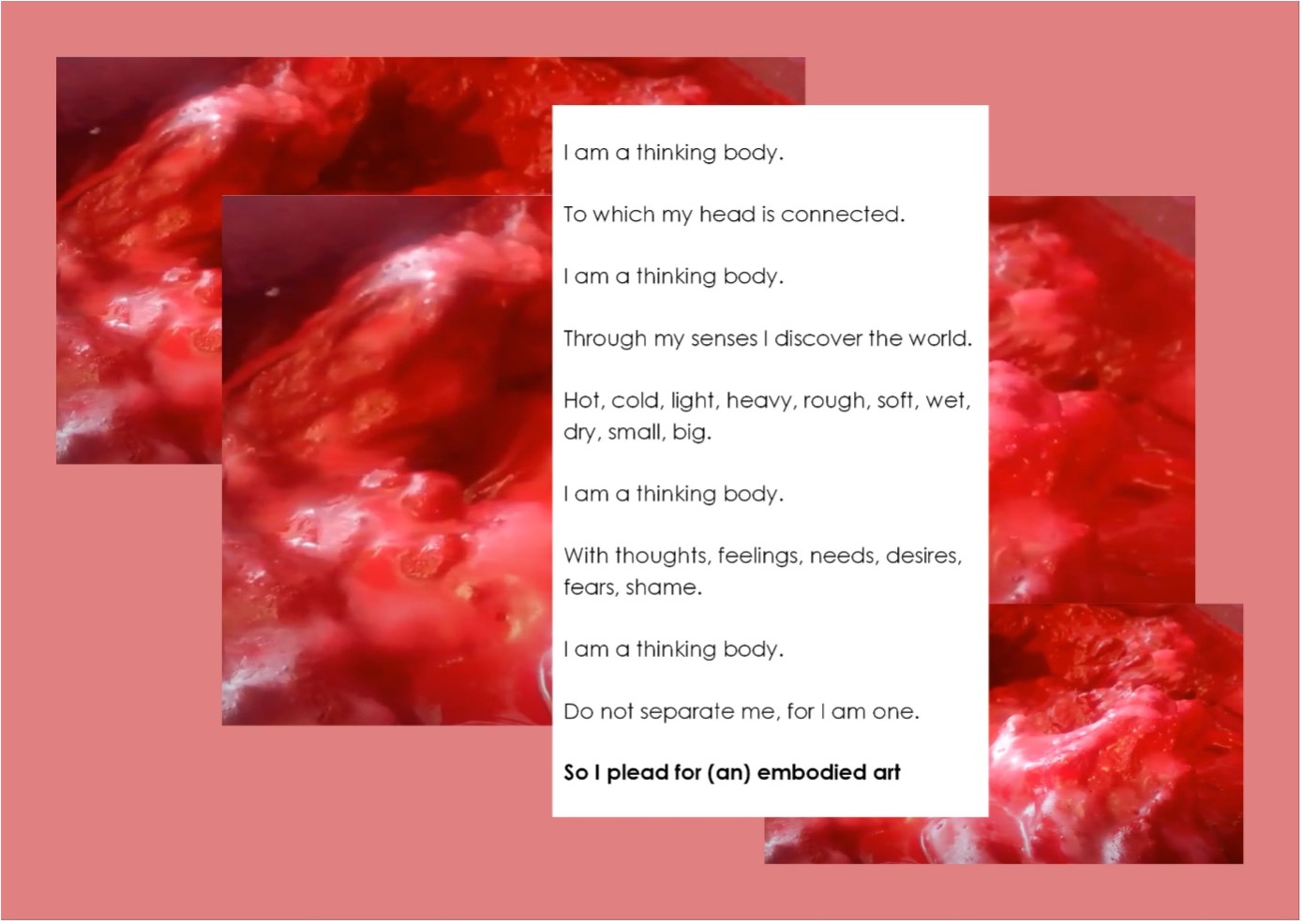Seminar Blogs
“Wearing Your Manifest” – Floor Mijland
On April 28th, 2021, at the seventh Transmission in Motion seminar, fashion designer Pauline van Dongen and Media and Culture scholar Lianne Toussaint discussed their PhD projects relating to wearable technology. As the title of the session, ‘When Designer Meets Academic – Theory and Practice of Smart Clothing’, suggests, the seminar focussed on the intricate relationship between academic and artistic practices, between designing and gathering input, and reflecting and generating output. As threads in a woven fabric, Van Dongen and Toussaint’s PhD projects fitted together, entangling “embodiment, new materialities, agency and intentionality of design, data ethics and research through design” (Utrecht University 2021).
According to Van Dongen and Toussaint, clothing mediates between the human body and the world, as does technology. This mediation process is not an interaction, in which all involved parties remain unchanged. It is an intra-action, in Baradian sense (Barad 2003), in which the entities involved irreversibly change. In Smart Clothing, technology, fashion and the human body are combined. Here, technology measures our bodily activity, we interpret the data, and use it to ‘improve’ our bodily performance. It promises us a more mindful state, in contact with our body, whilst in fact they “distract and disconnect us from our embodied subjectivity” (Van Dongen and Toussaint 2020). We focus on effectivity, efficiency, and self-enhancement, not on fulfilment and content.
In one of her projects, Van Dongen explored the possibilities of Smart Clothing to make the wearer more mindful of the body, instead of the data, creating the smart denim jacket ‘Issho’. Mindful, in this context, “means to focus one’s awareness on the present moment and to consciously experience one’s embodied presence in the here and now” (Van Dongen and Toussaint 2020). Here, the jacket functioned as a garment that mediates its “wearers’ experiences of their bodies in relation to their immediate surroundings” (Van Dongen and Toussaint 2020). In the denim jacket, postphenomenology and design come together, in one object.

Though Smart Clothing might be unavailable to most of us, what becomes evident is that what we wear shapes our relation to, interaction with and exitance in the world. Though fashion usually focusses on the visual aspects of the garment, and what it stands for or refers to (Van Dongen and Toussaint 2020), approaching it from a material perspective, fashion becomes something else. The clothes tell physical stories of how we want to interact with the world, as much as show our experiences in the world so far. It makes clothes, in a way, wearable manifests. In this regard, ‘Issho’ becomes a manifest for mindfulness, for being mindful of our bodies, acknowledging and highlighting our embodied existence in the world.
Inspired by Van Dongen and Toussaint, I wonder what if, as a next project, we focus on ‘slow fashion’, and what this may mean in a fast paced world. Choosing, for example, not to wear fast fashion as a statement against the polluting fashion industry already is a wearable manifesto, but it still means wearing ex-fast fashion. What then is ‘slow fashion’, and in what way can it physically nudge us towards a more sustainable lifestyle? Could it stimulate a more qualitative and sustainable awareness of our physical presence in the world?
References
Literature
- Barad, Karen. 2003. ‘Posthuman Performativity: Toward an Understanding of How Matter Comes to Matter’. In Signs: Journal of Women in Culture and Society 28:3, pp. 801-831. https://www-journals-uchicago-edu.proxy.library.uu.nl/doi/pdfplus/10.1086/345321.
- Utrecht University. 2021. “Transmission in Motion Seminar (2020-2021): “When Designer Meets Academic – Theory and Practice of Smart Clothing” – Lianne Toussaint (Utrecht University) and Pauline van Dongen (Eindhoven University of Technology)”.Transmission in Motion (blog), Utrecht University. April 28th, 2021. https://transmissioninmotion.sites.uu.nl/transmission-in-motion-seminar-2020-2021-when-designer-meets-academic-theory-and-practice-of-wearables-design-pauline-van-dongen-fashion-designer-and-lianne-toussaint-utrec/.
- Van Dongen, Pauline and Lianne Toussaint. 2020. ‘In Touch with the Now – Stimulating Mindfulness through a Smart Denim Jacket’. ArtEZ Platform for Research Interventions of the Arts (APRIA), 1:1. https://apria.artez.nl/in-touch-with-the-now/.
Images
- Figure 1. Mijland, Floor W. May 13th, 2021. “Embodied Manifesto”. Digital image. Private collection.
Manifesto
- Mijland, F.W. 2018. “Belichaming”. FloraMilanoArt, May 28th, 2018. YouTube video, 2:34. https://www.youtube.com/watch?v=Wj9nTIRjljk.

